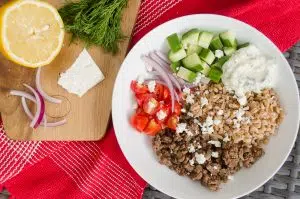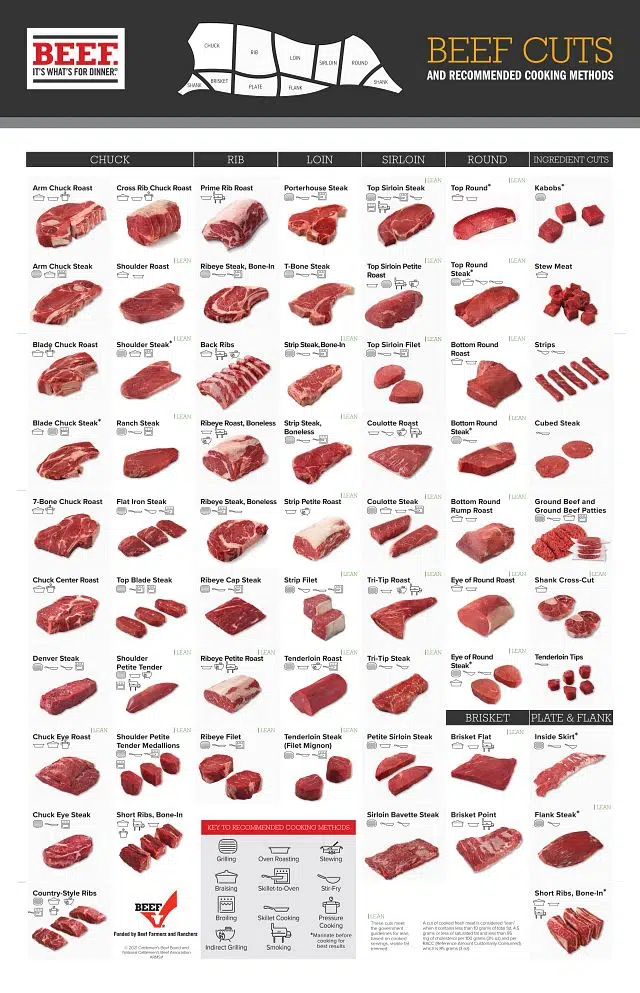No two families are alike. Some live life at a slow pace. Others are so busy they spend more time in their cars than in their home. Some have to work around nutritional needs or allergies and sensitivities, while others deal with food preferences or picky eating.
Long story short, there’s no one-size-fits-all solution for dinner time.
So, if you’re cooking dinner for your family, it’s important to pick foods that best fit your lifestyle. And I can practically guarantee that no matter what the specific needs of your family are, there’s a cut of beef that fits them. Beef is incredibly nutrient dense, and every cut contains 10 essential nutrients including protein, zinc, iron and many B vitamins. Simply put, beef packs a huge nutritional punch with every bite.
This post is sponsored by the Washington State Beef Commission.
Want to find the cut of beef that fits your lifestyle best? Read on for recommendations!
For the busy family with little time to cook, there are several great options. Choose quick-cooking cuts like ground beef or shaved beef that will cook in less than ten minutes. On the other end of the spectrum, you can choose cuts that work well in a slow cooker. If you’re a family that’s gone all day and your slow cooker will be going 9-10 hours, choose a fattier cut like a chuck roast or country-style ribs. Even better, choose bone-in cuts like back ribs or bone-in short ribs. Bone-in and cuts with a higher fat content are more forgiving when cooked longer, as opposed to leaner cuts (like a round roast) that may dry out or get tough if they’re overcooked. And don’t forget the simplicity of a roast beef sandwich for nights you really can’t spend any time in the kitchen.

For the heart-healthy family, beef has a research-backed place in your lifestyle. A healthy dietary pattern that includes lean beef can reduce heart disease risk factors, including total and LDL cholesterol, and blood pressure. By incorporating 7-18 ounces of cooked, fresh, lean red meat per week, individuals can improve their cardiometabolic disease risk factor profile including high blood pressure, low HDL cholesterol and diabetes risk. The key here is “lean,” but that doesn’t mean your options are limited. There are more than 36 cuts of beef that meet government guidelines for lean! Look for the terms “round” or “loin” to identify lean cuts – like sirloin, tenderloin, or eye of round.

For the allergy-conscious family, you’re in luck. A beef allergy is one of the rarest food allergies around, so while you might need to be conscious about other recipe ingredients, you’re free to enjoy any cut of beef you’d like!
For the foodie family, there are almost limitless options to stretch your culinary muscles. Grill a tenderloin roast, which takes a careful eye to pull it at just the right temperature before it overcooks. Smoke a rack of ribs with your signature rub. Braise a chuck eye roast in your perfectly-seasoned braising liquid until it’s fall-apart tender. Explore all the different textures, flavors, and properties of the different cuts of beef.

For the fresh-food-loving family, choose tender cuts that will cook up on the stove-top or grill. You may not enjoy heavier roasts or other cozy comfort foods, but things like a T-bone steak or kabobs made with bite-sized pieces of tenderloin will pair perfectly with a salad or fresh veggie side.

If the different cuts of meat stump you, you’re not alone. I spent years choosing the wrong cuts for the wrong recipes, and got really frustrated when my cooking efforts were disappointing because I wasn’t very knowledgeable about the different properties and ideal cooking methods of the different cuts. If that’s you, check out this super informative overview of the most popular cuts of beef, which ones are considered lean, and the recommended cooking methods for each. Personally, I’m printing it out and putting it on my fridge for quick reference.
Check it out (Click image to download)!


















